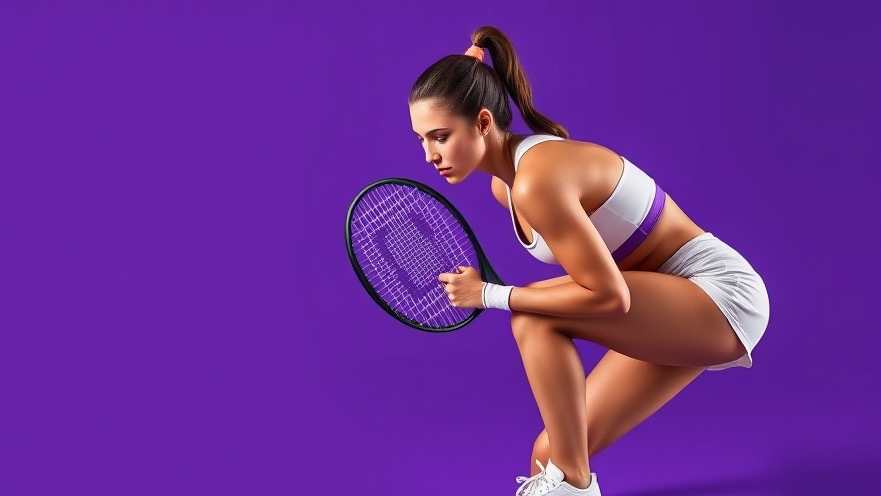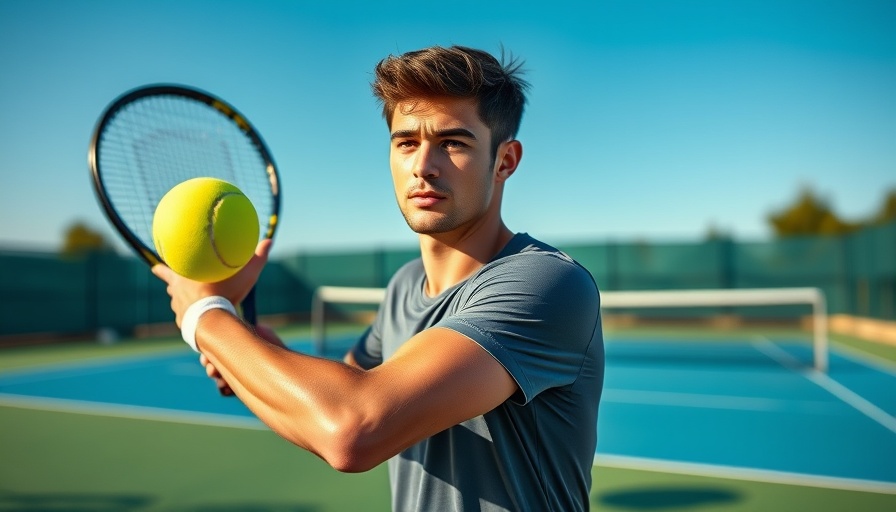
Understanding the Challenges of an Open Stance in Tennis
Tennis players often find themselves grappling with the intricacies of their stance during matches, especially when it comes to deciding between an open or closed stance. A recent discussion explores the technicalities of executing shots from an open stance—revealing why it's particularly challenging to maintain knee bend while balancing weight primarily on one foot.
In 'Why you can't bend your knees in an open stance', the discussion dives into the technicalities of player positioning, and we’re breaking down its key ideas while adding our own perspective.
The Weight Distribution Dilemma
When playing a forehand in an open stance, players must manage their weight distribution effectively. If your weight is heavily on your right foot, bending simultaneously at the knees can feel like trying to vault over a hurdle while juggling. The natural inclination is to lean more on that right foot, limiting your ability to drop low. This position creates tension and instability, making it nearly impossible to hit the ball with the desired power and accuracy.
In contrast, adopting a closed stance allows for a more balanced weight distribution. This setup gives players the leverage they need to squat lower, resulting in a steadier position and allowing for more control over their shots. Essentially, when the situation arises for executing a powerful low shot, using a closed stance proves to be a strategic advantage that shouldn't be overlooked.
Choosing the Right Stance for Every Situation
It's crucial to remember that the choice between an open or closed stance shouldn’t be simplistic. The height and speed of the approaching ball determine the most effective stance to adopt. For high balls, open stances are optimal, granting players the freedom to move dynamically and strike fiercely. Yet, for lower balls—where precision becomes paramount—bending the knees and reverting to a closed stance maximizes control.
Top female players occasionally demonstrate the remarkable ability to hit from a low point using an open stance, but such techniques often arise in situations where positioning is less than ideal. For instance, catching a half-volley low at the baseline while standing in an open stance can lead to forced errors if the player is not agile or prepared. It becomes evident that players are constantly adapting strategies mid-play, emphasizing the sport's dynamic nature.
Core Mechanics: Steady and Low
Another compelling point is maintaining a stable lower body when executing low contact shots. The level of stability directly influences how well a player can manage their stroke. A lowered center of gravity allows players to absorb impact better and respond with greater accuracy and force, ultimately enhancing their game.
Movement plays a fundamental role—keeping the lower body still during low shots while employing proper technique is essential. In practice, the mechanics of relaxing into the squat position with a closed stance should facilitate a well-timed swing, allowing for a cleaner execution. So, when adapting to an open stance, understanding your footwork and body positioning becomes necessary.
Fishing for Improvements: Why You Should Adapt Your Game
The beauty of tennis lies in the skill required to adapt constantly. The ongoing discussion regarding stances illustrates how even the smallest adjustments can significantly enhance game performance. This adaptability isn’t just about how you swing but also about when to adjust your physical positioning based on ball characteristics.
Players at all levels benefit from experimenting with a variety of stances during practice matches. Build muscle memory by integrating both open and closed stances into your routine. By doing so, you can ultimately elevate your court game and develop the confidence needed to tackle challenging opponents.
Final Thoughts
The complexities of stances in tennis are just one facet of the nuanced strategies players must master. Understanding your body's mechanics—such as weight distribution and stability—can be the key to executing a better shot. As you continue to delve into your training, embrace the challenges that come with switching between stances. This not only adds versatility to your play but keeps the sport exciting and unpredictable, shaping your personal tennis journey.
Tennis, like life, is all about adapting to the challenges thrown your way. The next time you step onto the court, consciously apply these insights. Make informed choices regarding your stance and watch your game transform!
 Add Row
Add Row  Add
Add 




Write A Comment